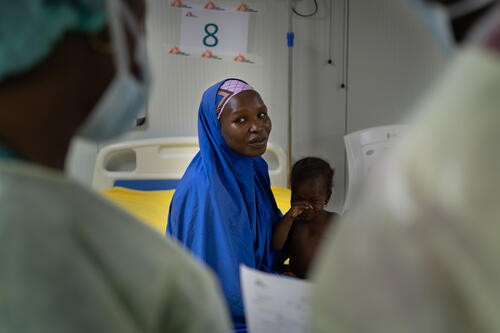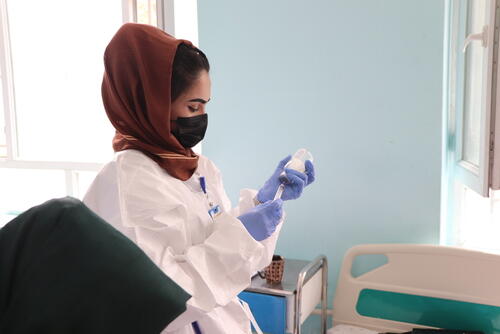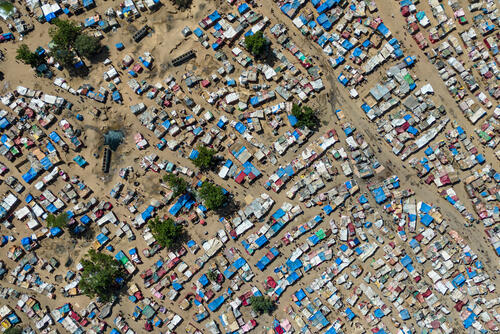Measles
What is measles?
Measles is a highly contagious viral disease and one of the leading causes of death among young children. A safe and effective vaccine has existed since the 1960s but outbreaks still occur due to ineffective or insufficient immunisation programmes.
While global measles deaths have decreased from 761,000 in 2000 to 136,000 in 2022, measles is still common in many low-income countries, particularly in parts of Africa and Asia.
Severe measles is more likely among malnourished children under the age of five. Those with insufficient vitamin A, or whose immune systems have been weakened by HIV/AIDS or other diseases, are especially likely to contract the virus.
In 2023, MSF teams administered 3,295,700 vaccinations against measles in response to outbreaks.
Who is MSF?
MSF is an international humanitarian organisation providing medical care in more than 70 countries.
Since 1971, we have been treating people caught in complex crises and chronic healthcare emergencies around the world.
Measles: Key facts
147,985
PEOPLE TREATED FOR MEASLES BY MSF IN 2023
3,295,700
VACCINATIONS AGAINST MEASLES BY MSF IN RESPONSE TO AN OUTBREAK IN 2023
95%
OF MEASLES DEATHS OCCUR IN LOW-INCOME COUNTRIES
What causes measles?
Measles is caused by the highly contagious measles virus. It is so contagious that 90 percent of people without immunity who share living spaces with an infected person will catch it.
Measles is transmitted via droplets from the nose, mouth or throat of infected people, by coughing, sneezing and breathing.
What are the symptoms of measles?
Symptoms appear between 10 and 14 days after exposure to the virus and include a runny nose, cough, eye infection, rash and high fever.
How is measles diagnosed?
Clinical diagnosis of measles requires a history of fever of at least three days, with at least one of the three ‘Cs' (cough, catarrh, conjunctivitis) present.
Clusters of tiny white spots on the inside of the mouth, known as Koplik spots, are also a sign of measles. These usually occur two days before the outbreak of the measles rash itself.
How is measles treated?
There is no specific treatment for measles – patients are isolated and treated for a lack of vitamin A, eye-related complications, stomatitis (mouth ulcers) dehydration through diarrhoea, protein deficiencies and respiratory tract infections.
In high-income countries, most people infected with measles recover within two to three weeks and mortality rates are low. In developing countries, however, the mortality rate can be up to 10 percent, rising to 20 percent in outbreaks with limited access to care.
Death is mostly due to severe respiratory infections, such as pneumonia; diarrhoea and stomatitis that can lead to malnutrition; and, more rarely, neurological complications such as encephalitis (inflammation of the brain).
How can measles be prevented?
A safe and cost-effective vaccine against measles exists, and large-scale vaccination campaigns have significantly decreased the number of cases and deaths.
The difficulty lies in the fact that at least 93 to 95 percent of people need to be immune to prevent new outbreaks.
Coverage remains low in countries with weak health structures, or among people with limited access to health services and large outbreaks still occur.
In 2023, MSF vaccinated 3,295,700 people against measles in response to outbreaks.
Spotlight: Measles in the Democratic Republic of Congo
News and stories: Measles



